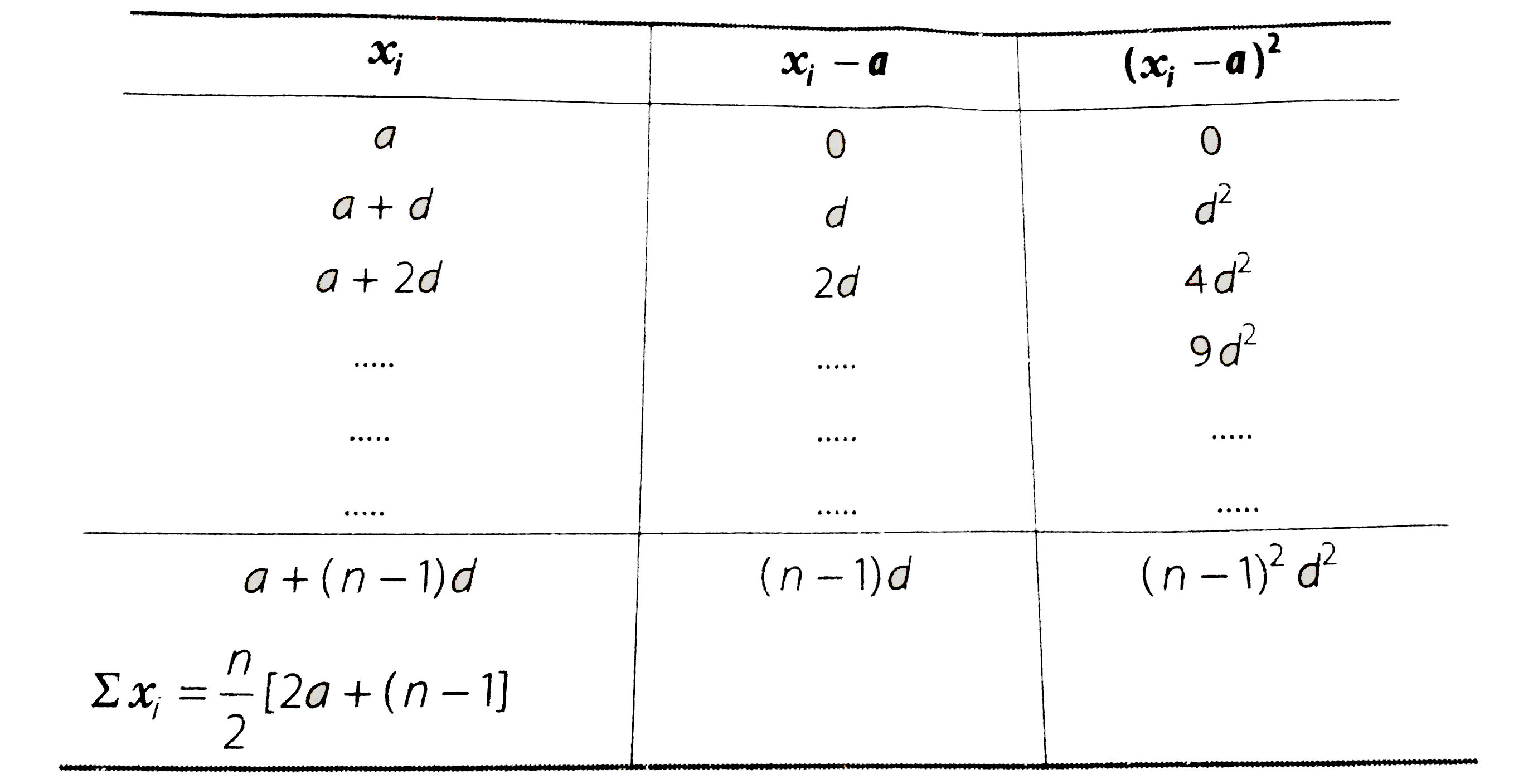Let Sn denote the sum of n terms of an AP whose first term is a. If common difference d is given by d=Sn−kSn−1+Sn−2 , then k is :
To solve the problem, we need to find the value of k in the equation given for the common difference d of an arithmetic progression (AP). The common difference d is defined as:
d=Sn−kSn−1+Sn−2
where Sn is the sum of the first n terms of the AP, Sn−1 is the sum of the first n−1 terms, and Sn−2 is the sum of the first n−2 terms.
Step 1: Write the formulas for Sn, Sn−1, and Sn−2
The sum of the first n terms of an AP can be expressed as:
Sn=n2(2a+(n−1)d)
where a is the first term and d is the common difference.
Using this formula, we can write:
Sn−1=n−12(2a+(n−2)d)
Sn−2=n−22(2a+(n−3)d)
Step 2: Find the expressions for An and An−1
The n-th term An of the AP can be calculated as:
An=Sn−Sn−1
Substituting the formulas for Sn and Sn−1:
An=n2(2a+(n−1)d)−n−12(2a+(n−2)d)
Simplifying this gives:
An=12(2a+(n−1)d−(2a+(n−2)d))=12(d)=a+(n−1)d
Similarly, for An−1:
An−1=Sn−1−Sn−2
Step 3: Find the common difference d
The common difference d can also be expressed as:
d=An−An−1
Substituting the values we derived:
d=(a+(n−1)d)−(a+(n−2)d)
This simplifies to:
d=d
Step 4: Substitute into the given equation
Now, substituting our expression for d into the equation provided in the problem:
d=Sn−kSn−1+Sn−2
We can rewrite this as:
d=Sn−kSn−1+Sn−2
Step 5: Compare coefficients
From the derived equation, we can compare the coefficients to find k.
By comparing the coefficients of Sn, Sn−1, and Sn−2 in both equations, we can conclude that:
k=2
Final Answer
Thus, the value of k is:
2
Topper's Solved these Questions
- BOOK - NAGEEN PRAKASHAN ENGLISHCHAPTER - ARITHMETIC PROGRESSIONEXERCISE - Problem From NCERT/exemplar20videos
ARITHMETIC PROGRESSION
- BOOK - NAGEEN PRAKASHAN ENGLISHCHAPTER - ARITHMETIC PROGRESSIONEXERCISE - Exercise 5a5videos
ARITHMETIC PROGRESSION
- BOOK - NAGEEN PRAKASHAN ENGLISHCHAPTER - AREA RELATED TO CIRCLESEXERCISE - Revision Exercise Long Answer Question5videos
AREA RELATED TO CIRCLES
- BOOK - NAGEEN PRAKASHAN ENGLISHCHAPTER - CIRCLESEXERCISE - Long Answer Questions2videos
CIRCLES
Similar Questions
Find the mean of first n terms of an A.P. whose first term is a and common difference is d.
View SolutionIf Sn denote the sum to n terms of an A.P. whose
first term is a and common differnece is d , then
Sn−2Sn−1+Sn−2 is equal toView SolutionIf Sn denotes the sum of n terms of an A.P. whose common difference is d and first term is a, find Sn−2Sn−1+Sn−2
View SolutionIf the sum of n terms of an A.P. is Sn=3n2+5n . Write its common difference.
View SolutionThe sum of first n terms of an A.P. is 5n2+4n, its common difference is :
View SolutionIf Sn denote the sum of n terms of an A.P. with first term a and common difference d such that SxSkx is independent of x , then (a) d=a (b) d=2a (c) a=2d (d) d=−a
View SolutionDetermin mean and standard deviation of first n terms of an AP whose first term is a and common difference is d.
 View Solution
View SolutionFind the mean and standard deviation of first n terms of an A.P. whose first term is a and common difference is d.
View SolutionFind the rth term of an AP sum of whose first n terms is 2n+3n2.
View SolutionWrite the nth term of an A.P. the sum of whose n terms is Sn .
View Solution

